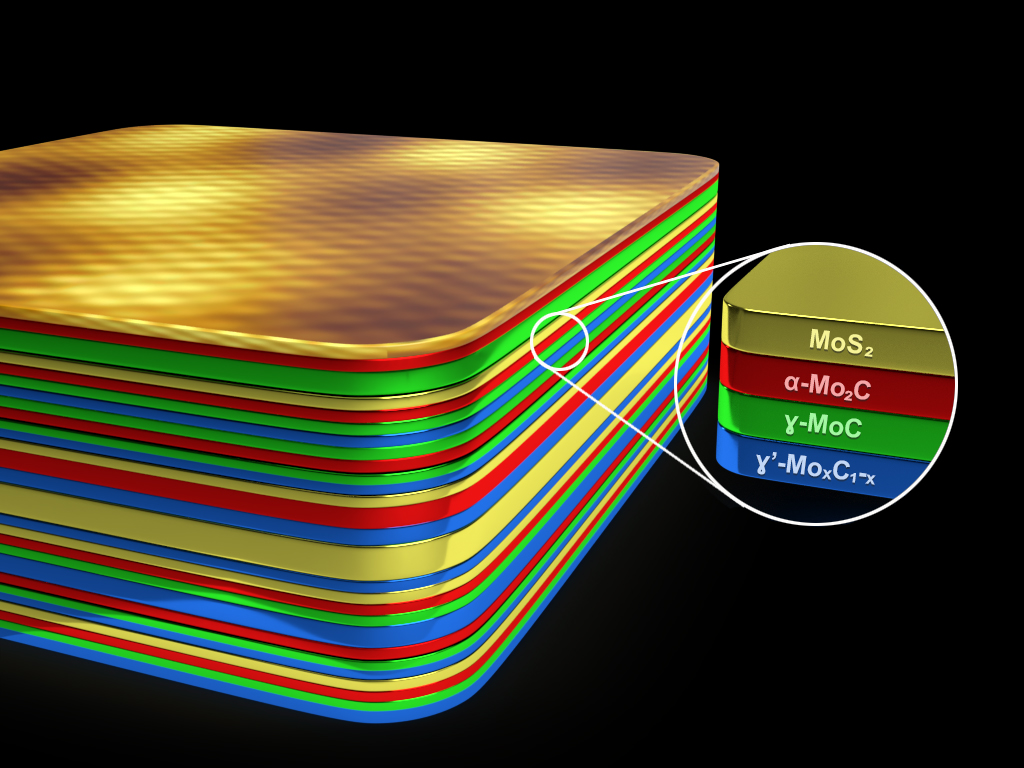The surprising discovery involved layering two-dimensional materials called molybdenum sulfide with another material called molybdenum carbide. Molybdenum carbide is a known superconductor, which means that electrons can flow through the material without any resistance. Even the best of metals, such as silver or copper lose energy through heat. This loss makes long distance transmission of electricity more costly.
“Superconductivity occurs at very low temperatures, close to absolute zero or 0 Kelvin,” said Mauricio Terrones, corresponding author on a paper in Proceedings of the National Academy of Sciences published this week. “The alpha phase of Moly carbide is superconducting at 4 Kelvin.”
When layering metastable phases of moly carbide with moly sulfide superconductivity occurs at 6 Kelvin, a 50 percent increase. Although this is not remarkable in itself –other materials have been shown to be superconductive at temperatures as high as 150 Kelvin– it was still an unexpected phenomenon that portends a new method to increase superconductivity at higher temperatures in other superconducting materials.
The team used modeling techniques to understand how the effect was achieved experimentally. According to materials scientist Susan Sinnott, “Calculations using quantum mechanics as implemented within density functional theory assisted in the interpretation of experimental measurements to determine the structure of the buried molybdenum carbide/molybdenum sulfide interfaces. This work is a nice example of the way in which materials synthesis, characterization and modeling can come together to advance the discovery of new material systems with unique properties.”
According to Terrones, “It’s a fundamental discovery, but not one anyone believed would work. We are observing a phenomenon that to the best of our knowledge has never been observed before.”
The team will continue experimenting with superconductive materials with the goal of someday finding materials combinations that can carry energy through the grid with zero resistance.
In addition to Terrones and Sinnott, authors on the PNAS paper, titled “Superconductivity enhancement in phase-engineered molybdenum carbide/sulfide vertical heterostructures,” are Ph.D. students or graduated Ph.D. students Fu Zhang, Yanfu Lu, Lavish Pabbi, Anna Binion Tomota Granzier-Nakajima, Tiany Zhang, Zhong Lin and postdoctoral scholars Kazunori Fujisawa And Yu Lei, Professor Eric Hudson and former Research Assistant Professor Laura Elias, all of Penn State, and Wenkai Zhang and Luis Balcas of Florida State.
This work was funded by a grant from the Department of Energy, which was recently renewed to continue their research.
Original post https://alertarticles.info


